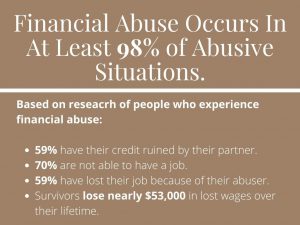Are you a lover or a fighter? Or are you both? If you answered “both,” we’ve got good news for you: arguing with your partner is actually good for your relationship. In fact, a survey of almost 1,000 adults found that couples who argue effectively are 10 times more likely to have a happy relationship than those who brush off, try to ignore, or avoid discussing sensitive issues. Ah, but the key word here is “effectively”! Couples need to know how to have disagreements in a healthy, productive way: according to Daryl Appleton, Ed.D., LMC, a psychotherapist and executive coach, “It’s important how we fight…because it could lead to a bigger problem if it’s toxic fighting – whereas in a healthy relationship, a problem is seen, it’s overcome, and people learn new ways to communicate.”
What you need are some techniques for getting it all out in a way that moves your relationship forward (and doesn’t end in a pile of broken dishes or days of sulking), so you can build your relationship up stronger through respectful communication.
Let It Out!
As we pointed out above, arguing with your partner is actually better than not duking it out emotionally, and airing all of those grievances. Avoiding bringing up tough subjects, and thereby stopping an argument in that one moment, doesn’t mean those issues go away, and it isn’t good for your relationship in the long run. According to Joseph Grenny, co-author of the New York Times bestseller Crucial Conversations, “the biggest mistake that couples make is avoidance. We feel something but say nothing. At least until we can’t stand it anymore. So we wait until we are certain to discuss it poorly before we bring it up.”
But couples who do let it all out tend to stay together longer, and ultimately end up in more peaceful, healthy relationships, because all of that communication usually makes them more in tune with each other, rather than driving them further apart. So why is arguing helpful and productive in a relationship?
- As mentioned above, arguing is one the most honest forms of communication, and it helps to accelerate feelings of intimacy, trust, and connection, as well as to teach your partner how to communicate with you in a more productive way.
- Fighting can relieve and help to avoid resentment. If your partner always gets things the way they want them because you’re not voicing your needs, you’ll end up resenting them, and in a very unhealthy relationship.
- Couples who argue (instead of avoiding issues) tend to stay together longer.
- Letting out your emotions can keep the passion alive in your relationship.
- Fighting can save you from boredom – how stale would your relationship feel if you always just agreed on everything?
What Sets People Off
And you know something else about fighting? Pretty much everyone’s doing it – a lot. According to Dr. Carla Manly, a clinical psychologist and relationship expert, “One interesting study found that couples argue, on average, seven times per day.” And what are we all arguing about so much? According to a study led by Lauren Papp, the associate dean of research at the University of Madison-Wisconsin’s School of Human Ecology, which had 100 husbands and 100 wives privately keep track of their fights in diaries over the course of 15 days, some overarching patterns emerged. The top 12 things it seems couples (especially those with children) fight about are:

- How to raise their children
- Household chores
- Communication and listening styles
- How to spend their free time
- Work-related issues
- Money
- Habits
- Extended family
- Commitment, trust, and fidelity
- Intimacy, or having enough sex and showing enough affection
- Friends
- Personality traits
Some of these things are obviously more easily resolved than others (your spouse is probably not going to change their personality – or their mother – overnight!), but the good news is that, because these are patterns that come up again and again in relationship after relationship, you can almost predict these arguments and try to course-correct with certain strategies, so you don’t end up in an explosive, toxic fight.
The Right Way to Argue
So how can you make fighting a positive thing in your relationship? First of all, get it out of your mind that you have to fight less, and focus on fighting better. When you focus on actually listening when those perpetual problems come up, you bring respect into the equation and start to really get to the heart of those issues. Then, once you’ve stopped worrying about how much you’re fighting, and really started to listen during these tiffs, you can identify the common threads and underlying themes of your arguments – you might find you’re having the same basic 3 or 5 fights over and over again!
Those are the first steps towards resolving the main issues in your relationship. While you’re moving in that direction, and arguments continue to crop up, use these strategies to turn your arguments into productive discussions:
- Don’t just dive into an argument; let your partner know you respect and care about them first, and try to start with something you can both agree on.
- Stay on topic, and argue about one thing – the issue at hand – at a time. As experts say, “localize” the argument, don’t “globalize” it – in other words, keep your arguments specific to the situation, and don’t make sweeping “you always” or “you never” statements about your partner, or bring up past offenses.
- Know the facts and start there.
- Use “I” statements to express how you feel, not accusatory or provoking language about what “you” did to cause the problem.
- Be mindful of your body language: maintain eye contact and try to keep yourself open, instead of crossing your arms and closing yourself off.

- Take proactive pauses if you start to get too heated so you can notice how you’re feeling and avoid saying things you’ll regret.
- Try to look “underneath” the argument and find out what is really behind that fight about who gets to choose plans for the weekend or who does the dishes more. Could it be that one partner is feeling overwhelmed, underappreciated, or like they matter less?
- Don’t argue if you’re not in the right mental condition, headspace, or even physical space! Make sure you are doing it in the right place at the right time, and you’re not hungry, tired, or completely stressed.
- Find common ground, and soften your judgments by asking yourself why the reasonable, rational, and decent person who you love would do what your partner is doing
- Never resort to the silent treatment. If that’s your M.O., make more of an effort to directly communicate your feelings; if you’re the one getting the cold shoulder, let your partner know how that affects you and ask them instead to collaborate with you on finding a solution. And if you do need to walk away and take a break, that’s fine, but make sure your partner knows that you’re not just bailing from the fight.
- If you’re in the wrong, admit it!
- Don’t appeal to third parties, keep it between the two of you.
The main takeaway here? Fighting in a relationship is not just 100% totally normal, it could actually be vital to keeping your relationship healthy and growing – but only as long as you take the time to learn how to do it right. And sure, that takes some serious thought and emotional work, but isn’t your relationship and your partner worth it? Now, gently put down that vase, take a breather to collect yourself, and start really listening to what your partner is saying – you might find out some things that can connect you on a whole new level.



















